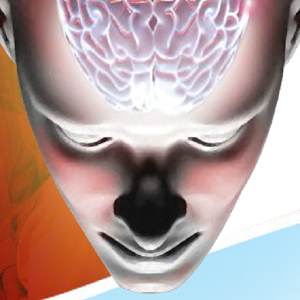Canadian Health&Care Mall: Endobronchial sunctioning

Mental status changes and mortality
October 7, 2015
What to do if you have problems with erection?
October 21, 2015Canadian Health&Care Mall: Endobronchial sunctioning
Endobronchial sunctioning is the mechanical aspiration of pulmonary secretions from a patient with an artificial airway in position. It is essential in patients with artificial airway in whom cough reflex, actions of ciliated cells in respiratory tract may be severely compromised. However, it is not without complications, if not performed properly. These range from mucosal trauma, hypoxemia, cardiac dysrhythmias, increased intracranial pressure, and to in extreme cases, bronchial perforation. Here, we are reporting a rare case of aspirated broken suction tube in tracheobronchial tree. If the foreign body is not discovered and retrieved early, severe complications such as persistent atelectasis, pneumonia, and pneumothorax may develop.
CASE PRESENTATION

A three year-old boy presented with fever, vomiting, diarrhea and hematemesis for 3 days prior to admission. He then had status epilepticus with respiratory distress in the ward where he required ventilation for airway protection. He was then treated for dengue shock syndrome with associated encephalitis resulting in prolonged ICU stay for 21 days. It was a stormy experience during the critical period as he needed high ventilator setting and inotropic support to maintain his life. He encountered failure of extubation thrice with post extubation stridor and desaturation.
Reintubations were required and supraglottic edema was the finding during direct laryngoscopy. Because of the oedema, smaller endotracheal tube size 4mm was only able to be inserted instead of size 5.5 mm initially. Endobronchial suctioning was done by the intensive care nurses. As the child was in recovery phase and planned for extubation, he was not sedated. Gaging, cough and bitting of endotracheal tube occurred during suctioning. The negative pressure applied was 150mmHg.
The extubation failure was attributed to supraglottic edema. No foreign body was suspected, especially when the chest x ray was reported normal. A few courses of nebulisations of adrenaline and intravenous steroid were attempted but to no avail. Rigid bronchoscopy was performed, and a 10cm long fractured suction tube was successfully retrieved from main bronchus across the carina. The child was then extubated uneventfully the following day without stridor and desaturation.
DISCUSSION
Broken suction catheter in tracheobronchial tree has been reported before. Rogen et al. reported on a 32 year-old intubated HIV-positive patient with persistent right basal infiltrates and atelectasis due to a 14-cm tip of a closed suction tube that had presumably fractured during suctioning and lodged in right main bronchus. Garcia-Aparicio et al. also reported same foreign body presenting as a persistent pneumothorax. Martin et al. reported another case in an infant where a kinked suction catheter was trapped by tip of the endotracheal tube at its side holes, with minimal mechanical force applied during suctioning, it was torn. Test by the manufacturer showed that the average force required to tear off the catheter tip of a Ch. Dahlhausen Optiflo suction tube was 83 Newton (8.3kg) (Ch=French gauge).
To our knowledge, this is the first reported case from Malaysia. We suggest another possible etiology or risk factors for the fractured suction tube. During suctioning, tracheal mucosa was invaginated into the side holes of suction tube. By doing so, the tube was fixed at one end and with minimal force from operator, the tube could be fractured. Additionally, gag reflex could have stretched the tube as well and broke it. Another etiology would be simply due to biting of tube by the patient and cut it off from the proximal part.
In order to prevent such a complication, we recommend proper and thorough checking of the suction catheter pre- and post-suctioning and applying negative pressure from 80 to 100 mmHg. Experimental data to support an appropriate maximum suction level are lacking. Suction pressure should be set as low as possible and yet effectively clear secretions. Negative pressure of 80-100 mmHg in neonates and children and less than 150 mmHg in adults has been recommended. A study by Kuzenski showed that there was no difference in terms of amount of secretions that were sucked out between 100 mmHg and 200 mmHg. Also, applying mouth gag to prevent biting of tube during the procedure and marking suction tube with clear radiopaque line may help prevent such complication.
In summary, although it is rare to have a medical appliance in tracheobronchial tree, it is preventable. Endobronchial suctioning looks simple, but it is hazardous if not properly and carefully performed. Intensive care staffs should have adequate education and practice to be licensed to do this procedure. If there is any suspicion, otorhinolaryngology referral should be made early from intensive care unit for bronchoscopy so as to prevent more severe complications.


